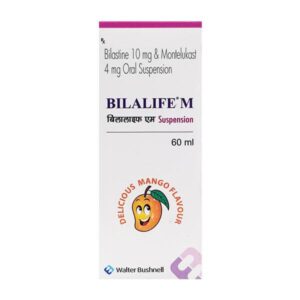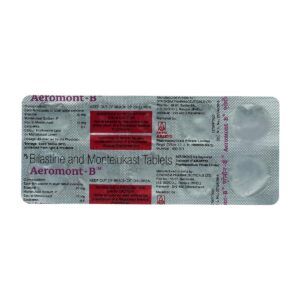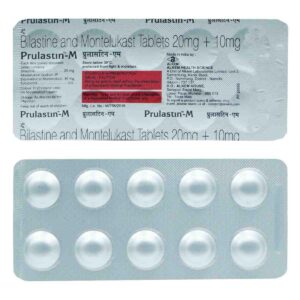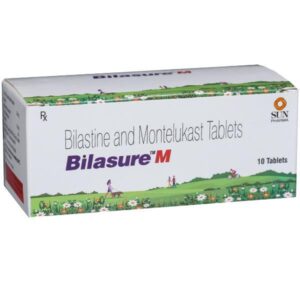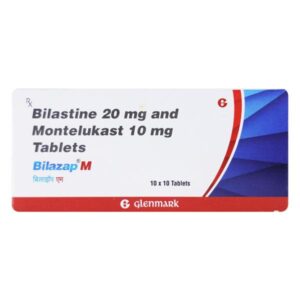MONTELUKAST + BILASTINE
Montelukast: Montelukast is a medication that belongs to a class of drugs known as leukotriene receptor antagonists. It is commonly used to treat asthma and allergic rhinitis (hay fever).
The primary mechanism of action for Montelukast is the inhibition of leukotrienes, which are chemicals in the body that cause inflammation and constriction of the airways. By blocking the receptors for leukotrienes, Montelukast helps to prevent these effects and improve breathing.
The typical adult dose of Montelukast for asthma is 10 milligrams (mg) taken once daily in the evening. For allergic rhinitis, the usual dose is 10 mg taken once daily. For children, the dose is based on age and weight, and it may vary.
Side effects of Montelukast are generally mild and infrequent but can include headache, gastrointestinal symptoms (such as abdominal pain, diarrhea, and nausea), dizziness, and rash. Rarely, serious side effects such as mood or behavioral changes, including suicidal thoughts, have been reported, although a causal relationship with Montelukast has not been definitively established.
It’s important to note that Montelukast is not a rescue medication for acute asthma attacks, and if symptoms worsen or emergency inhalers are needed more frequently, immediate medical attention should be sought. Additionally, it is crucial to discuss any existing medical conditions and medications with a healthcare professional before taking Montelukast to avoid potential drug interactions or contraindications.
Bilastine: Bilastine is a second-generation antihistamine used to relieve the symptoms of allergic rhinitis (hay fever) and chronic idiopathic urticaria (hives). It is available in tablet form and requires a prescription in most countries.
The primary mechanism of action of bilastine is as a selective H1 receptor antagonist. It competes with histamine for binding to H1 receptors, blocking the allergic response and reducing symptoms such as itching, sneezing, runny nose, and watery eyes.
The recommended dose of bilastine for adults and adolescents (12 years and older) is usually 20 mg once daily. For children aged 6 to 11 years, the dose is usually 10 mg once daily. It is best taken on an empty stomach, at least one hour before or two hours after a meal.
Bilastine is generally well-tolerated, with a low incidence of sedation compared to older antihistamines. However, some potential side effects may include headache, drowsiness, dizziness, fatigue, gastrointestinal disturbances (such as nausea and diarrhea), and allergic reactions. While rare, serious adverse effects such as liver injury and cardiovascular events have been reported, but the relationship to bilastine is uncertain.
As with any medication, it is essential to follow the recommended dose and instructions provided by your healthcare professional. If you experience any persistent or severe side effects, it is important to seek medical advice.

